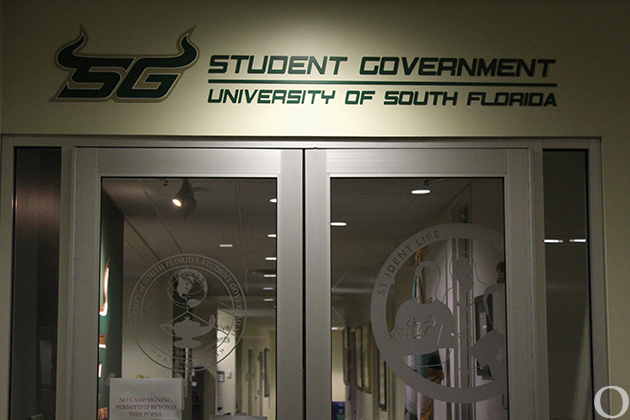Public education system gets flagged
A law requiring the presence of an American flag in every classroom has gone into effect at the University of South Florida. The law, entitled the Carey Baker Freedom Act, states that every public educational institution in Florida is mandated to display a 3-by-2-foot flag in each classroom. It requires that all flags be up by Aug. 1, 2005.The motivation behind this act is ambiguous.
Student body President Bijal Chhadva thinks it’s simply an act of patriotism.
“I believe that because we are a state-funded university, they felt the need to put them in classrooms, just as they do in public high schools,” Chhadva said.
For junior Leaha Widrowicz, the title of the act implies otherwise.
It’s named after a Florida Republican senator from Eustis who served in Iraq for 13 months. The bill was motioned by another Florida Republican senator and passed on July 1, 2004.
Widrowicz thinks that because the act is named after Baker, it symbolizes the lawmaker’s support for America’s role in the Iraq war. She also thinks the movement is similar to the flags that went up after Sept. 11.
“Flags tend to go up after a disaster to show solidarity,” she said. “America is a materialistic country. You have to have items in order to appreciate what you believe in.”
Widrowicz also thinks this appreciation does not necessarily transfer to students because many of them are not aware of the law.
“It’s just one more thing to look at when you’re bored in class,” she said. “If students don’t know about the act itself, how is it helping them to appreciate America?”USF professor Larry Leslie thinks the act was politically motivated.
“This has really nothing to do with anything other than politics,” he said .”It’s designed to make people like (politicians).”
He added that by implementing and supporting the law, politicians can say that they are “solid Americans” and that they “stand for American values” when they are on the campaign trail.
“Nobody is going to want to be against the American flag,” Leslie said. “He’s expecting to get votes for what he did.”
“You don’t learn appreciation for America with a piece of cloth hanging in the back of the classroom,” he said. “There are plenty of ways to really learn about America, to really appreciate what America is and how we got here, but a flag is not the way to do it.”
Leslie added that the cost of the flags is not worth the effort.
“I think there is a better use for money than that, and that our lawmakers ought to be concerned about issues in Florida that are much more important than whether a flag hangs in every classroom or not.”
How much this law will cost Florida is ambiguous. The act states that schools must fundraise or receive donations to acquire the flags. For instance, SunTrust Bank donated funds to the University of Central Florida to provide a flag for each classroom.
According to the act, “There is no reliable data available to determine how many classrooms currently display flags approved under the bill.” There is also “no way to determine the effectiveness of seeking donations and fundraising activities for the purchase of flags.”
There are, however, projections. UCF estimated that each flag cost a total of $30 to install in each classroom.
The average cost of the flags, not including labor and mounting brackets, is estimated at $17.50. Assuming the classrooms do not already display flags, funding for Florida’s community college and university classrooms would cost $92,628. Including K-12 classrooms the cost rises to $2,729,930.





